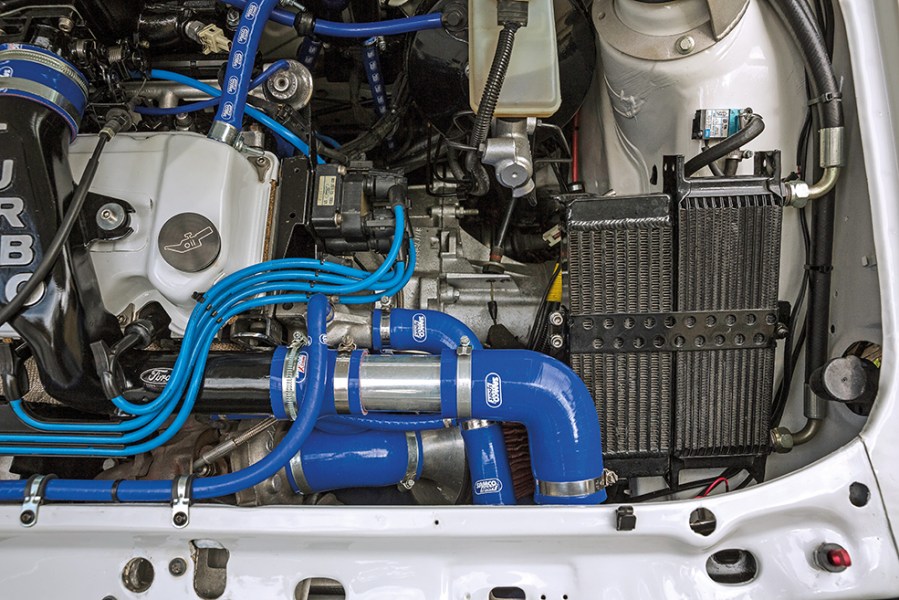Cooling is crucial for optimum performance, especially where forced induction is concerned. So let’s take a closer look at how to keep your car cool!
Internal combustion engines aren’t very efficient. They’re basically big air pumps that turn fuel into kinetic energy, via a controlled explosion in the cylinder. During this process they create heat, lots of heat, which isn’t ideal for two reasons. Firstly, it wastes a fair chunk of that potential energy. More importantly, too much heat can cause serious damage. Unfortunately, we can’t avoid the creation of this heat but we can manage it. That’s why every engine has cooling devices, such as radiators, oil coolers, intercoolers or chargecoolers, and sometimes even brake cooling ducts too. When we tune our engines, either by naturally aspirated tuning or adding boost into the mix, we have to beef up these cooling parts to keep up with the extra heat that those mods create.
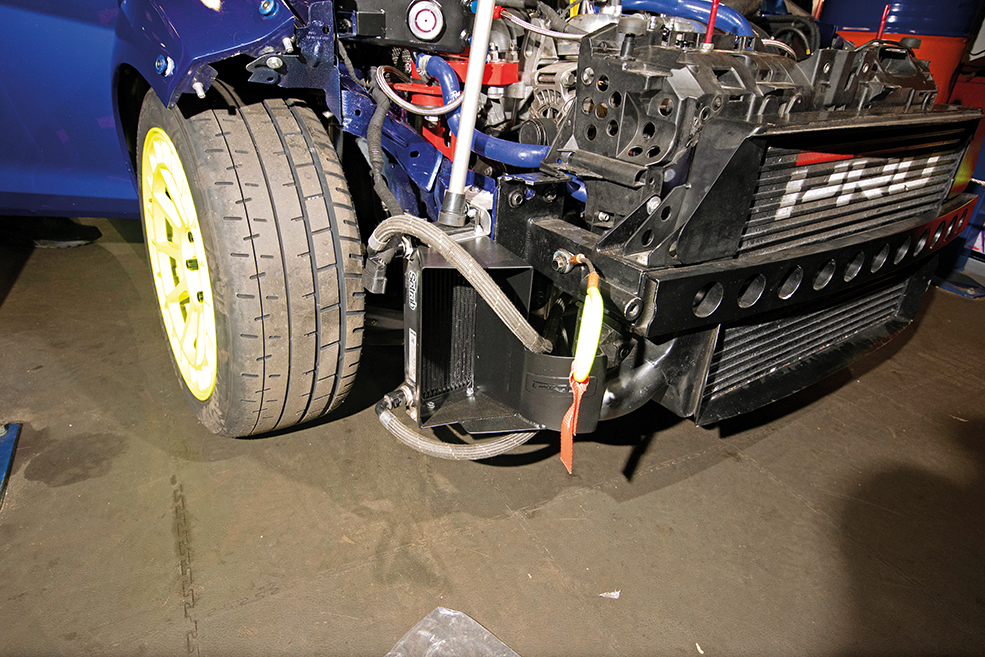
How to keep your car cool – why do tuned engines need better cooling?
Engines produce power by mixing air with fuel. In a petrol engine the mixture is ignited by the spark plugs, in a diesel engine it’s simply squeezed together. Both methods force the pistons down the cylinder bores, and it’s these forces that turn the crankshaft and eventually the wheels. To increase the power output of an engine, we have to add more fuel and air. The ratio has to stay roughly the same, so we just stuff more of both into the engine. The direct result of this is a bigger explosion and even more heat. As such, we need better cooling systems to keep these higher temperatures within the same safe working limits.
Typical damage caused by excess heat
If temperatures get too high – oil, water, inlet air, and brakes – it can lead to some pretty catastrophic results. The most common issues resulting from excessive temperatures include:
Engine oil breaks down – It gets thinner and doesn’t lubricate the vital moving parts of the engine properly, bearings run dry causing wear and eventually failure.
Gaskets fail – Causing both oil and coolant to escape from where they should be, leading to further overheating/lubrication problems.
Pistons get very hot – They then expand and scrape on the cylinder bores, potentially causing contact damage to the rings or piston skirt, resulting in lower compression and damage to the bores.
Turbos can fail – Excess heat build-up can cause carbon deposits to block the tiny oil ways within the turbo, leading to bearing failure. Or, in extreme cases, really excessive heat can even cause the turbine shaft to bend if not allowed to cool gradually.
Brakes can fail – Too much heat build-up will quickly cause brake pads to overheat (especially OE ‘road’ pads) and braking efficiency will deteriorate. In extreme cases the brake fluid can even boil, allowing air to enter the system, rendering the brakes useless. Uprated brakes can alleviate this issue, so check out our guide to the best brake pads and rotors in 2023.
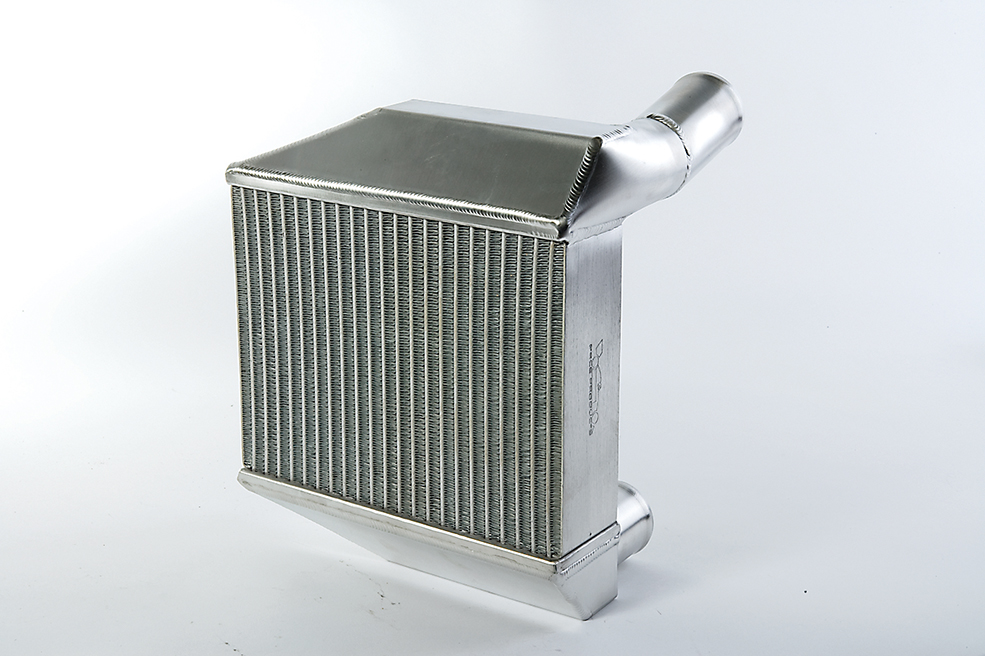
What is a cooler and how does it work on a car?
The first thing you need to know when you’re thinking about how to keep your car cool is to understand how coolers work. Intercoolers, radiators and oil coolers all work in a very similar way. They pass air, coolant or oil through a main core. These cores are mounted where there is a lot of airflow, typically at the front of the car. Hence the term ‘front-mounted intercooler’. As the car moves forward, it forces air through the front and lets it leave out the back. As the air passes through, it absorbs some of the heat from whatever is inside the chambers of the cooler.
The amount of heat absorbed is down to many factors such as the internal design of the core, its size, positioning, etc. How well the cooler lowers temperatures is often referred to as the efficiency of the cooler; all things being equal, the more heat it reduces, the more efficient a cooler is. The principle is fairly simple but there are several things you can do to maximize the ability of your various coolers to keep temperatures in check.
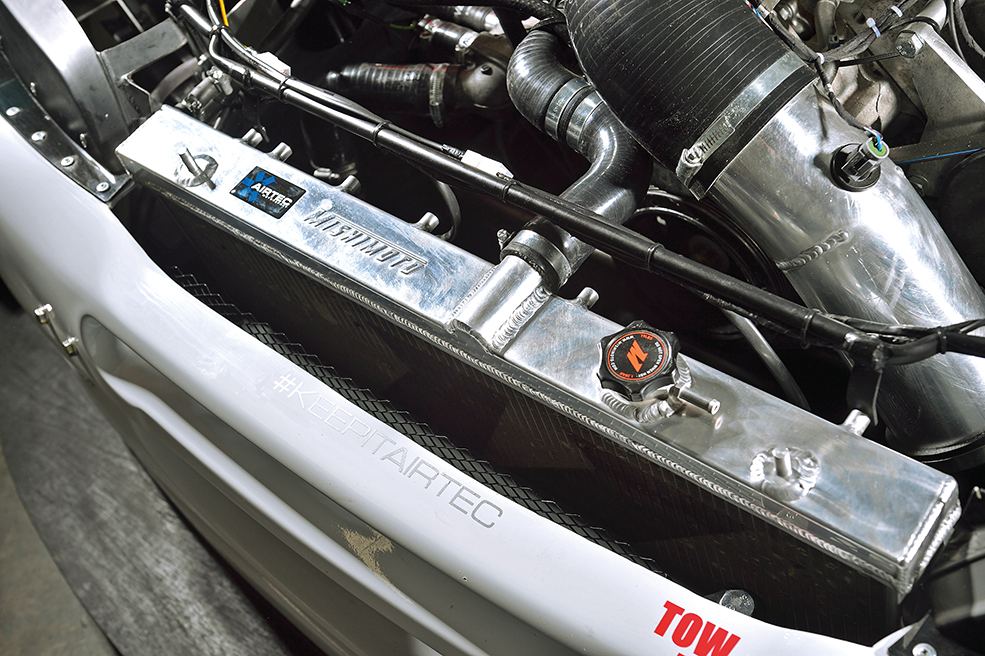
What is a radiator on a car and how does it work?
Every water-cooled engine has a radiator, whether it’s naturally-aspirated, turbo or supercharged. The point of a radiator is to keep the engine coolant in check. The water pump pushes coolant around the engine in a channel known as the water jacket. When the engine is cold, coolant stays inside the engine’s water jacket to help it warm up faster. However, when the coolant reaches a certain temperature, the thermostat opens and allows the fluid to flow through the radiator to cool it down.
There are two main radiator core designs; crossflow and downflow. Most modern cars use crossflow designs, where the coolant enters in one corner and exits in the opposing corner, so the coolant flows diagonally across the core. This means they’re typically the most effective design, as it takes longer for the coolant to make it across than it would on a downflow design, where coolant enters right at the top, in the middle, and exits at the bottom. Gravity has more of an effect in a downflow design. One advantage of this style is the core is narrow, so it can help packaging where space is tight. You typically see a downflow design on older cars , whereas more modern designs utilize a crossflow radiator.
What are car radiators made of?
Standard radiators used to be made from brass-copper, because that’s a good conductor, and more recently from plastic because they’re cheap to produce. However, modern aftermarket rads are generally larger and thicker than the items they replace, and usually made from aluminum. Not only do they work well, they’re relatively light too. If you want to maximize your coolant circuit, you should consider fitting electric fans on the back of your radiator, consider switching to a waterless coolant or using a coolant additive to improve the water’s ability to transfer heat, and even fine-tune when the radiator comes into play by fitting thermostat with a different temperature rating.
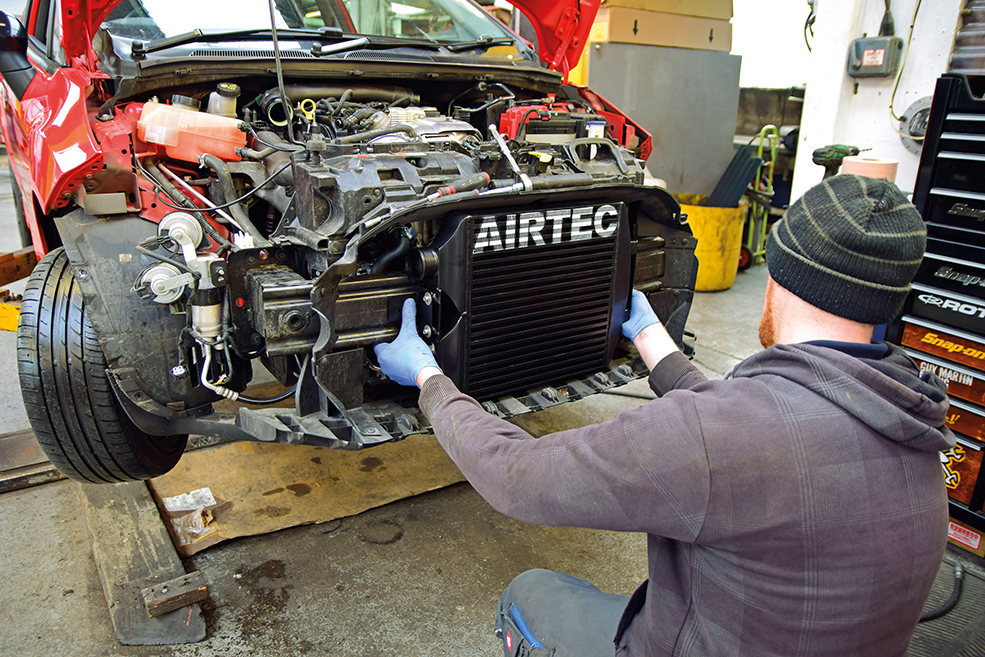
How to keep your car cool – what is an intercooler and how does it work?
Turbos and superchargers both heat up the air entering the engine. You need some method of reducing that heat, otherwise you end up with a host of problems. At best, the ECU will do everything it can to reduce power to protect the engine, which usually means pulling a load of ignition timing. At worst, if the engine sucks in hot air then it will send temperatures soaring inside the combustion chamber, leading to detonation and melted components.
Intercoolers are air-to-air coolers, meaning they simply rely on air passing through them to draw heat away from the air inside. There are two main types of core used in air-to-air intercoolers; bar-and-plate and tube-and-fin. Both have their advantages; tube and fin is significantly lighter than bar-and-plate (which is good when you consider where it’s mounted – right out at the front of the car where you really don’t want any excess weight), and they are usually cheaper to produce. However, bar-and-plate cores are said to offer better cooling properties and are generally more robust due to their heavier construction. So, it depends on the specific application as to which type is preferred.
How big should the intercooler be?
You want the biggest intercooler possible, that’s how to keep your car cool. You may have seen arguments on the internet about bigger intercoolers causing more of a pressure drop, effectively lowering the boost. In theory this may be the case, but in reality, larger performance-orientated intercoolers usually have better end tank designs that actually help promote flow across the cooler. This often negates any negative effect the larger core may pose, and in many cases boost levels actually increase because the new intercooler poses less of a restriction than the OE item, regardless of its increased size.
As with any cooler core, more rows mean more potential airflow. A larger surface area will give you a better chance of reducing temps but can be hard to fit in the engine bay. Also, they need to be mounted in such an area where they will receive a constant stream of cooling airflow across them, there’s little point in having a huge intercooler that only receives airflow across part of the core because the rest is obstructed by crash structures, headlights, or whatever. This is why some intercoolers are very deep but not much taller than the OE part they replace. These work by giving the air passing through the core more time to absorb heat and can be very useful where space is tight.
Airflow guidance
One factor that you need to consider when thinking about how to keep your car cool, though, is that the cooling airflow will always take the path of least resistance. So, if we make it more difficult for the air to pass through the core than it would be to simply go around it, then we massively reduce the efficiency of the cooler. To help overcome this, many performance intercoolers incorporate ducting to help guide the cooling airflow through the core, not allowing it to ‘escape’ around the sides.
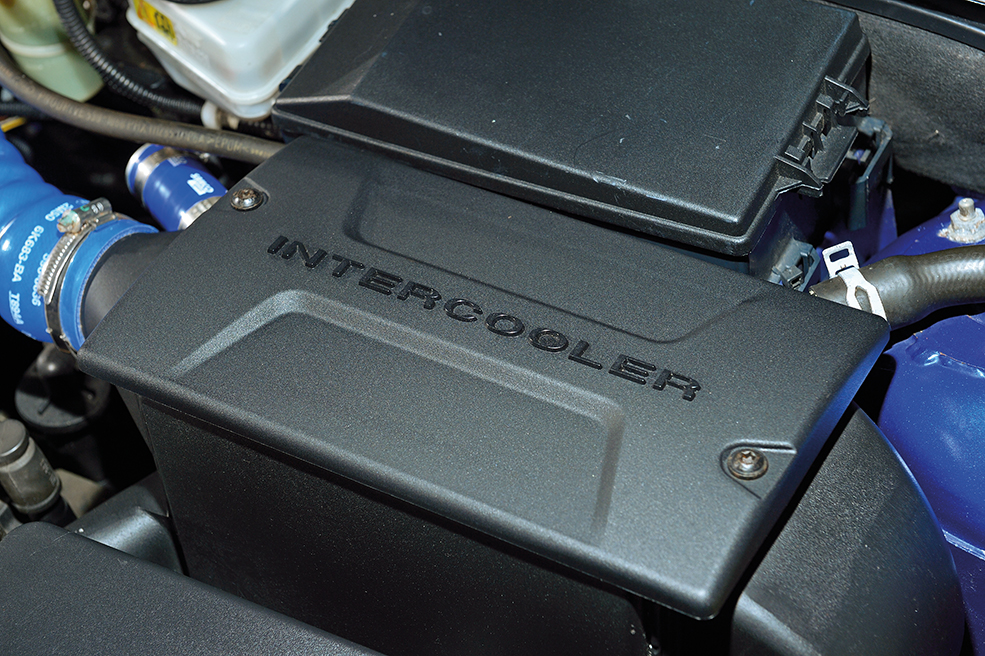
What is a chargecooler and do I need one?
A chargecooler is an interesting alternative to an intercooler. Unlike an intercooler, which is an air-to-air radiator, a chargecooler uses water to cool the charge air. Essentially, it consists of a water-filled tank with a tube running through the middle, carrying the compressed air on its way into the engine. As the charge air passes through the tube, the heat transfers from the air inside to the surrounding water. The water is then pumped back into the engine cooling system and cooled by the radiator. Chargecoolers are a good option when you haven’t got much space, or more specifically limited airflow. It’s obviously important that the radiator is up to the task of cooling the fluid from the reservoir inside the chargecooler. Otherwise you’re just giving that already heated charge air a warm bath.
Silicone hoses
These can be extremely helpful for both the radiator and intercooler circuits and overall to the problem of how to keep your car cool. OE hoses are made from rubber and have plenty of issues, such as bulging and flexing under increased pressures and temperatures. In contrast, performance hoses made from silicone are more resistant to heat and pressure, maintain they’re shape better, and will last a lot longer before they degrade – they generally look smarter too. Most silicone hose manufacturers make off-the-shelf hose kits for both coolant and boost hoses, so you can replace all the OE hoses in one hit. Aluminium hard pipes can also be useful, especially for a customised installation.
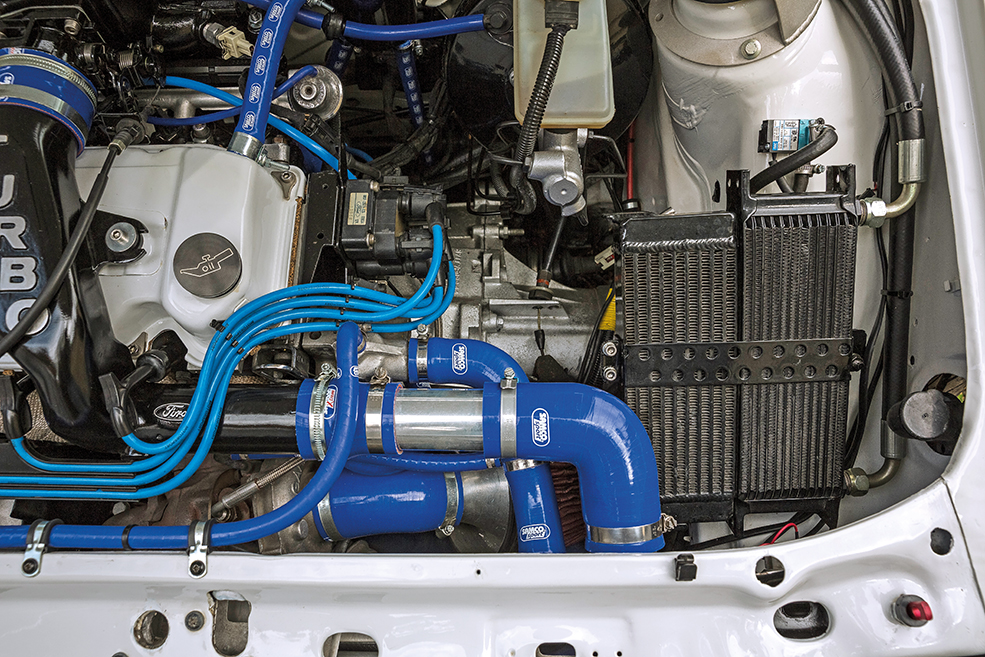
What is an oil cooler and do I need one?
Engine oil coolers play a crucial part in controlling engine temperature and are a key part of solving how to keep your car cool. Many people think that the engine oil’s job is purely to lubricate the moving parts within an engine, but it also plays a huge part in controlling engine temperature too. If the oil gets too hot, it thins, and it loses its ability to lubricate the moving parts effectively. This in turn causes more friction and more heat, which can quickly spiral out of control until something breaks.
Nearly all production cars have some way of keeping the oil temperature under control, whether that’s simply using airflow to cool things or a more complicated setup using the engine’s coolant system and a heat exchanger to remove excess heat from the oil system. But, as with most things, these are only designed to do a certain job, and once we exceed the limits of what the OE oil cooler is capable of we can start to see oil temperatures rise. This is where it becomes wise to add an additional oil cooler. Effectively, it’s a mini radiator purely for the oil system. Hot oil flows through the core, which is then cooled by air passing over it. There are many different sizes of oil cooler available, so it’s easy to find one that will suit your application and intended use.
What is a turbo cooler?
A turbo cooler is basically a small mini-radiator that assists the rest of the cooling system with keeping the turbo temperatures under control. When the water exits the super-hot turbo it then goes back into the header tank and the rest of the coolant system, potentially causing the entire coolant system to heat up. A turbo cooler, is an additional cooler that cools the water after it exits the turbo and before it returns to the header tank. This helps lower the overall temperature of the entire cooling system, and can be a simple solution for applications suffering from high water temps caused by the turbo.
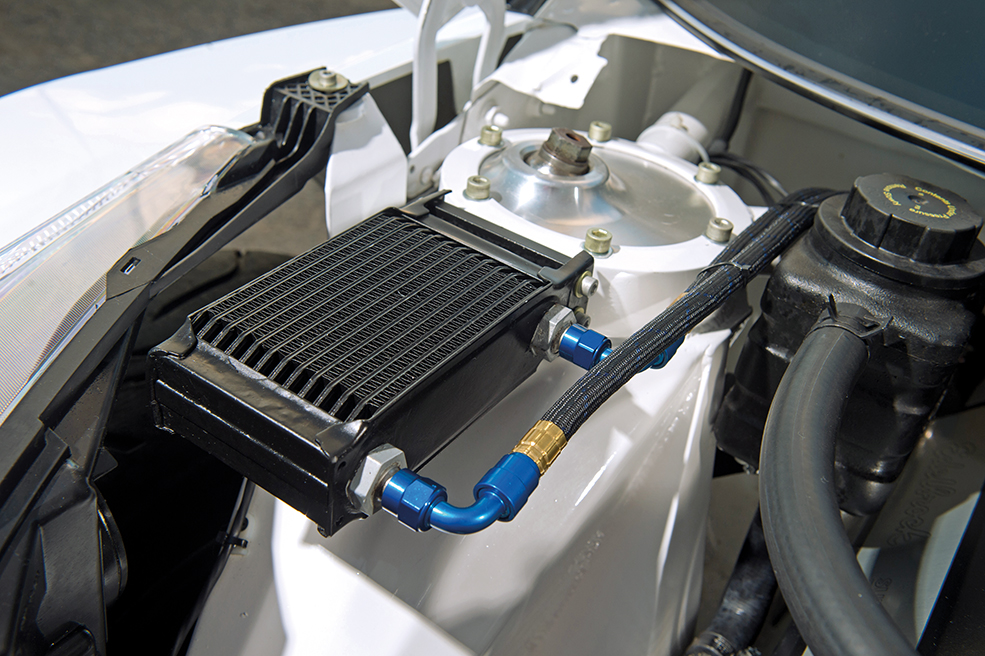
How to keep your car cool – what is a transmission cooler?
It’s surprising how many people overlook the oil in their gearbox and differential(s). Regular gearbox oil changes are particularly important for anyone who does regular trackdays in a big-boost turbo (or supercharged) car, as the combination of engine torque plus lots of grip from sticky tyres, puts huge strain on the transmission and it gets very hot, very quickly. Transmission oil coolers can be a lifesaver on this type of car too. Without one, the oil inside can get very hot and degrade very quickly, causing wear to bearings and other moving parts. In fact, in some cases, simply re-directing more airflow across the transmission with enlarged ducting can significantly reduce the operating temperatures of gearboxes and differentials.
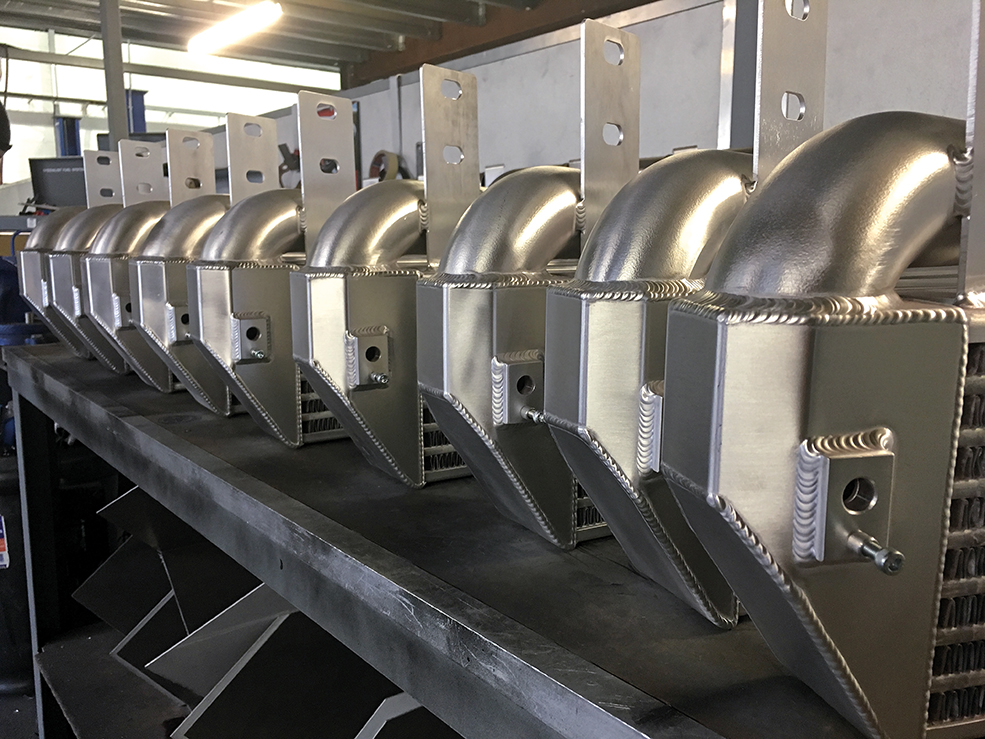
Does the size of a cooler matter?
The size of the cooler has a massive effect on its cooling properties, but it is not always a case of ‘bigger is better’. You need a cooler that’s the correct size for its application. It is more to do with volume of the cooler and mass of the working fluid (oil, air, water) than the actual size of the cooler itself.
For example, an intercooler the size of an oil cooler wouldn’t be any good, and by the same token nor would an oil cooler the size of an intercooler. This is where things start to get a bit scientific. It’s all about the specific heat capacity of the working fluid, which relates to the amount of heat energy a kg of that working fluid can transfer.
The specific heat capacity of air is 1.01 kilojoules per kg. This means that every kg of air can transfer 1.01kj of heat energy. Whereas oil has a specific heat capacity of 2.13kj per kg. Therefore, oil is twice as good at transferring heat than air, but it doesn’t stop there. These calculations are based on mass (kg) not volume (liters).
By the time you allow for the fact that 1kg of oil is just 1.14 liters, but 1kg of air is 1114 liters, you can see why an intercooler needs to be much larger than an oil cooler! Furthermore, you generally only need to cool engine oil or transmission fluid by around 10-20ºC to keep it at the optimum operating temperature, whereas the figure for charge air sits closer to 50ºC.
What is the optimum size for a cooler?
The optimum size of a cooler is a compromise between different factors, the most common being space available in the engine bay. Intercoolers also have to consider the fact that the more volume there is, the more turbo lag there is to contend with. That’s due to there being a larger volume to fill before any of the charge air enters the engine.
How to keep your car cool – cooler pressure drop
There will almost always be a pressure drop across a cooler; the physical restriction of working its way through the cooler will mean the pressure of the fluid coming out will always be less than the pressure going in. And this effect gets worse with larger volumes, so a bigger cooler will have more of a pressure drop across the cooler.
However, many standard OE coolers are compromised and a performance-orientated cooler can reduce the pressure drop across the cooler, while increasing its size. The same principles apply to all coolers, but to understand pressure drop its easiest to look at intercoolers.
The theory would suggest that if you increased the size of an intercooler it would have a greater pressure drop across the core, meaning the boost level going to the engine is lower than before. However, as a well-designed intercooler will pose less restriction to that airflow, it can negate the negative effect of the larger volume. In fact, it’s not uncommon to see performance intercoolers actually result in a boost increase at the engine (because the flow is so much less restrictive) rather than a boost drop, and this is despite having a larger volume to fill.
A lower pressure drop is good news all round, especially for a turbo, as it means the turbo doesn’t have to work as hard to produce the same boost pressure entering the engine. Water radiators and oil coolers also suffer from pressure drop and while the end result may not be as noticeable to the driver as increased turbo lag and lower boost pressures, it can be even more detrimental. The oil/water pump will have to work harder to force the fluid through the cooler, which can lead to cavitation with potentially fatal consequences for an engine.
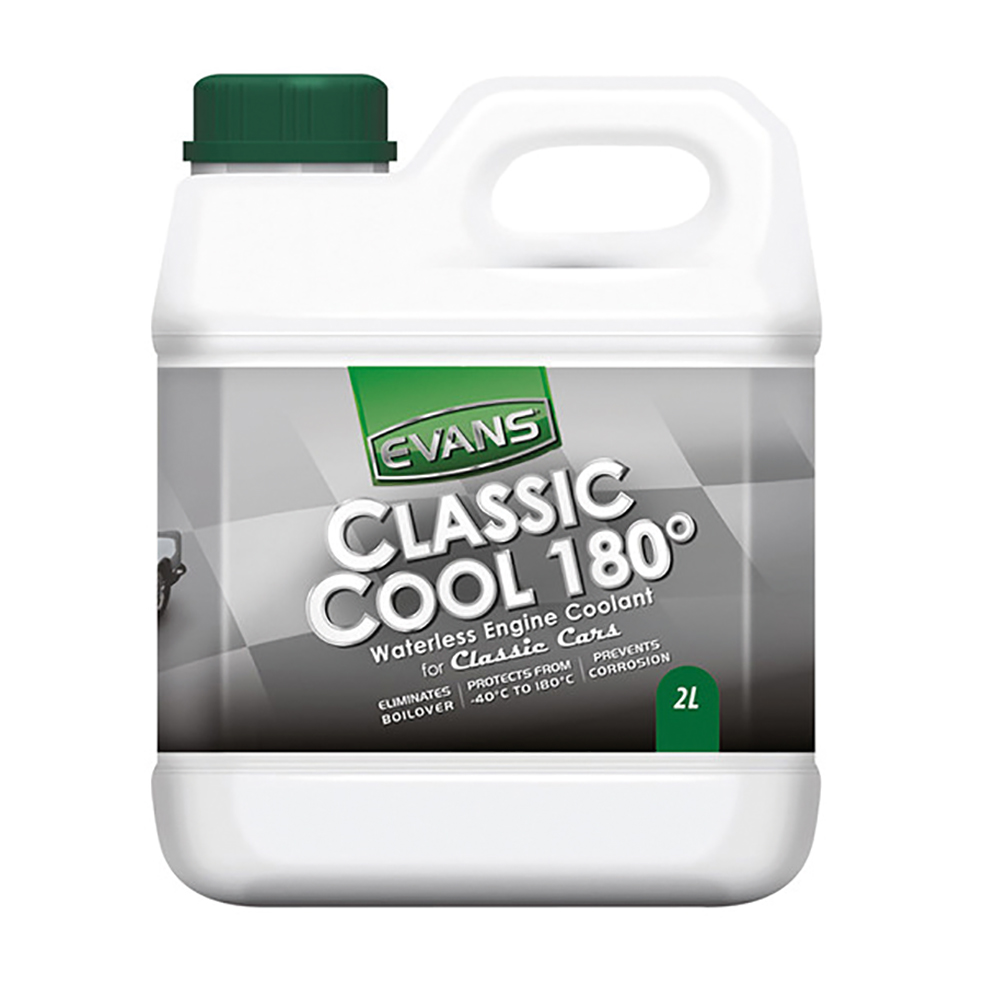
How to keep your car cool – waterless coolants and water additives
Water absorbs heat extremely well, but it does have some downsides. At normal operating temperature, small air bubbles form on the outside of the cylinder bores that understandably get very hot. If the engine overheats, water in the coolant channel boils and those bubbles implode under great pressure. We call this process Cavitation. It damages the metal, eroding it away and eventually leading to a catastrophic failure. One way you can get around this problem is to use a waterless coolant or coolant additive, such as Red Line Water Wetter or Mishimoto Liquid Chill.
They all work in a similar way, by reducing or completely eliminating the water content in the coolant and raising the boiling point way above 100℃. Some claim to absorb heat better than plain water, resulting in power gains with the right tuning. One definite advantage of these products is they last an extremely long time, although most require you to use some kind of preparatory liquid first, which does increase the price. Using one of these products means you shouldn’t get any sludge build up in the bottom of your radiator either.
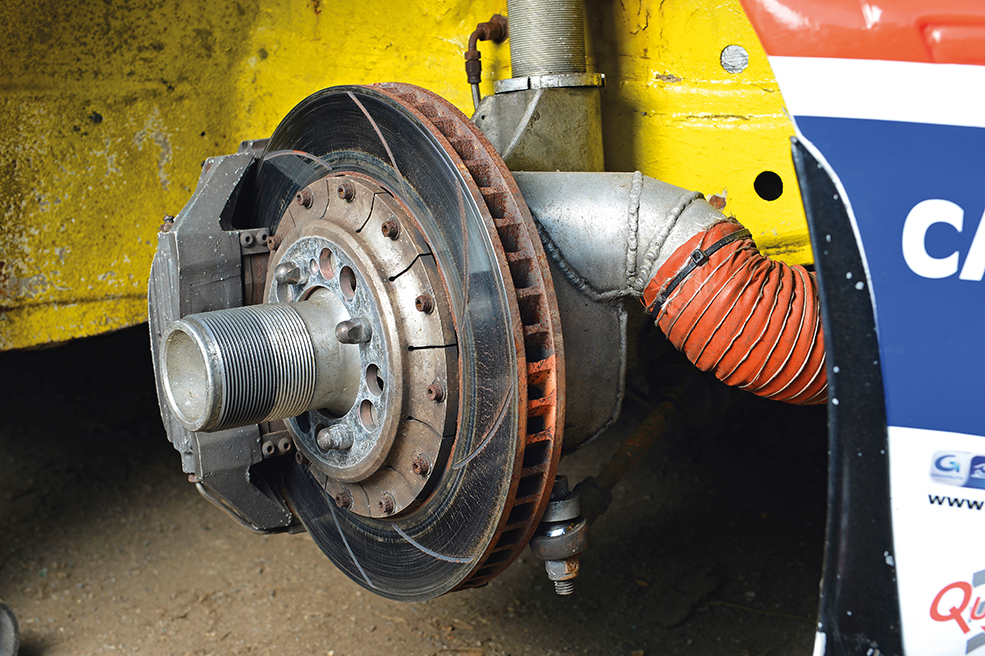
Brake cooling
Brakes are another part of a car that get very hot, and failure to control this heat can result in poor performance – in the worst cases no brakes at all, so it’s worth paying attention to while you solve how to keep your car cool! By their very nature, brake pads biting onto a brake disc will cause friction, and friction causes heat. In many road applications the factory setup will be fine, but if we then start to use those brakes harder and more frequently, that heat build up can’t dissipate quickly enough and things start to overheat. This will cause brake fade, and in really bad cases can actually cause the brake fluid to boil and result in no brakes at all!
You could remedy this with complex water-cooled brake calipers, but they’re incredibly expensive and complex to install. As such, you’ll only tend to see them in top-end motorsport applications. For most enthusiastic drivers and track day fans, simple ducting to improve airflow to the brakes is sufficient to keep everything under control. Many modern cars have similar brake ducting as standard, but it’s relatively cheap and easy to install to cars that don’t. Want to learn more? Check out our full brake cooling guide.

